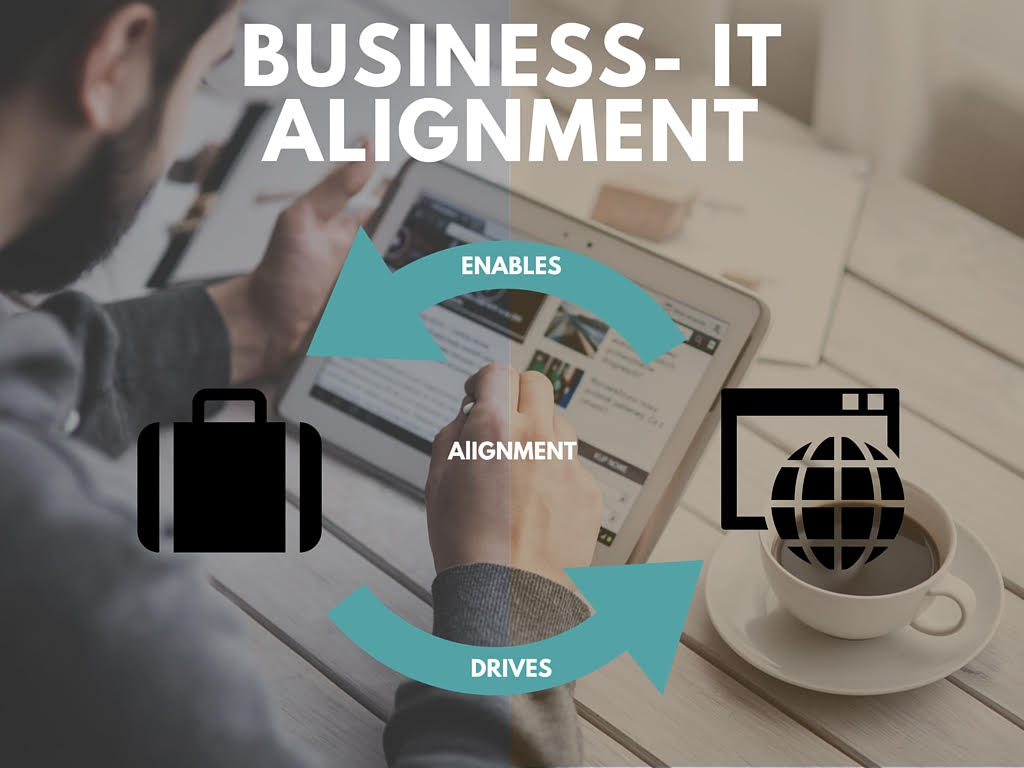“True alignment changes the way team members view their actions; they embrace team decisions and organization actions as if they were their own.”
This quote was taken from a SlideShare for an audience of business leaders. A successful leader in a company is able to align disparate silos within the organization to create one, unified team. Yet this remains one of the biggest challenges for most companies. Even under one roof, it is us versus them; the IT guys versus the business guys. And this is a company killer.
So what is business-IT alignment? And what benefits does achieving it have for your business?
Business-IT alignment is achieved when the two separate “silos” come together as one, and share and move toward the same strategic goals, as one. Assuming that the optimal outcome for any business is to make a profit and improve ROI, then both the business side and the IT side should share this overarching goal, and work towards it.
What many business leaders and executives seem to forget about is the important and direct role that IT plays in increasing ROI. But without IT, we don’t have the necessary tools and technology to achieve this goal. IT enables business and simultaneously, business drives IT.
Not only does an IT business alignment result in added business value, but it also makes many challenges and problems that are commonly associated with IT completely disappear, as if by magic. It also allows for IT to stay modern, and keep your business up-to-date. So if you are a CIO, or any other executive, what 3 steps can be followed to promote a business-IT alignment?
Start By Addressing Your Business Processes:
With experience working in a business process consulting and engineering firm, I have found that an invisible problem is the most common: businesses frequently attempt to implement a solution or software, in efforts to automate a process that was broken to begin with. The company then turns to IT, expecting them to tune and customize it to the company, to fix that automated process. There are two problems here: 1) The process is broken to begin with, so automating it only makes matters worse, and 2) IT cannot properly customize software if they are not 100% sure of what the goals of the business are, and the particular hopes for the solution itself.
This is why it is imperative that you asses your business processes first. Identify if your processes are optimal for your company. Conducting a gap analysis will also help you uncover some other problems you may be having, not just within your processes, but among your tools and your people too. Upon conducting the gap analysis, IT can help business leaders better understand some of these problems.
Communicate to Create a Plan:
Gap analysis of business processes will help with devising a realistic strategy that will migrate the business toward their goals. However, it is imperative that the findings and insights are shared in order to coordinate a plan to achieving a business goal. This planning stage will help close the gap between what business managers need and what IT delivers.
But keep in mind that just because business executives created a plan doesn’t mean that it is a good plan. Both IT and business should be involved in the creation in order to create an optimal plan. The first step to doing this is to talk to each other.
Communication between IT and business can be difficult. There is tech lingo, and there is business lingo; and the two do not mix well. When I think of an apple, I think of a green fruit with a stem and leaf, but you may think of a red fruit with no stem. It is the same concept here.
One way of avoiding barriers to communication is to provide additional resources for both IT and business executives. This can be visuals in a presentation, or even links to articles or case studies that describe a similar goal or outcome.
There should also be an ongoing dialogue to clarify business needs, in business terms for all members of IT. IT executives and their colleagues need to understand exactly what it is that the business expects from their tools, and business executives need to understand exactly what it is that IT can feasibly provide them with.
Implementation and Training:
During this phase, it is again critical to communicate. IT understands exactly how the tools work, but other employees may not understand. So whenever a new solution is implemented, it is imperative to conduct proper training on how to use the tool, and why it is useful.
I think of software or tools like sewing kits. The sewing kit is a great tool that can be used to fix a problem- to repair a torn seam. But if you give that sewing kit to someone who has never used it before, it probably will not get fixed- or at least not well. But if your mom taught you exactly how to tie the needle to the thread, and pull the needle through, and use the thimble to protect yourself, then you can fix the problem, seamlessly.
The same concept can be applied to software solutions. You need to ensure that every user (not just the executives, or just the front line employees) are able to effectively use the tool. This will ultimately optimize the results.
Want to set up a wireless Conference Room?Try Now


